Investigating Past Ocean Circulation, Slowey Led NSF-Funded Southern Argentine Margin Expedition
Dr. Niall Slowey led an NSF-funded expedition to the Southern Argentine Margin, with three oceanography graduate students also onboard.
Feb 21, 2020
Ocean circulation plays a central role in regulating the Earth’s climate system — transferring heat from warm, low latitudes to cold, high latitude regions, and cycling various elements, including carbon, nutrients, and trace elements.
Modern oceanographic observations and geochemical evidences have revealed that the Southern Ocean and North Atlantic Ocean are the largest and most important engines of today’s deep ocean circulation.
However, our knowledge of Earth’s past ocean circulation is less clear. For example, aspects of ocean circulation during the Last Glacial Maximum (LGM) — the time during the most recent glacial period when ice sheets at both poles were at their greatest extent — are not fully understood.
“Unfortunately, our knowledge of the end-member characteristics of LGM water masses, particularly those originating from the Southern Ocean, is very limited,” said Dr. Niall Slowey, professor in the Department of Oceanography at Texas A&M University.
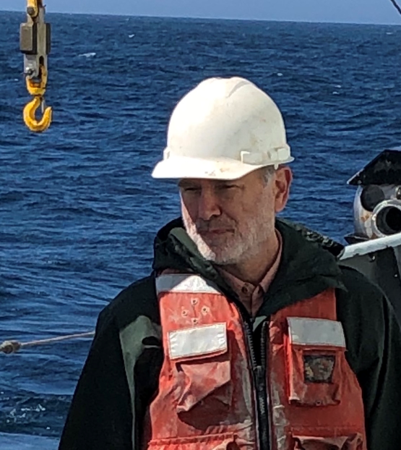
Dr. Niall Slowey, professor in the Department of Oceanography at Texas A&M University.
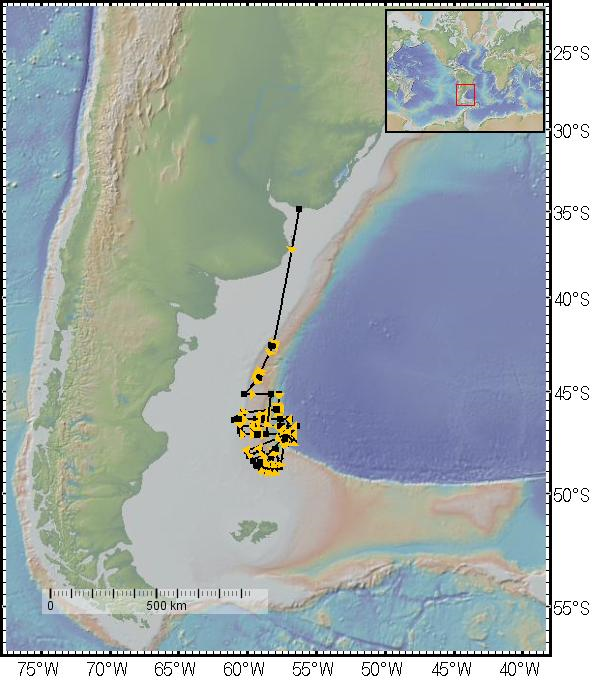
The Argentine margin and the track of the R/V Thomas G. Thompson. The ship embarked and arrived back to the port in Montevideo, Uruguay, with most work being done in a large area located north of the Falkland/Malvinas Islands. (Image courtesy of Ruby Schaufler.)
From Sept. 11 to Oct. 31, 2019, Slowey led an expedition in the Southern Argentine Margin aboard the ship R/V Thomas G. Thompson, to investigate the characteristics of the water masses originating from the Southern Ocean and their role in climate/ocean circulation during recent geological past, including the LGM. This collaborative research, co-led by Dr. James Wright, professor at Rutgers University, was funded by the National Science Foundation (NSF).
“The Argentine margin is like an intersection,” Slowey said. “This oceanographic region is a unique place where all of the major water masses in the Atlantic Ocean converge.”
To reconstruct the history of ocean water masses and better understand their variations, in conjunction with past climate, the answer lies in the marine sediment beneath the seafloor, according to Slowey.
The histories of climatic and oceanographic conditions are reflected by the geochemical composition and deposition of the sediments that accumulate along continental margins over time. Moreover, changes in climate, sea-level, and ocean circulation greatly influence the sediment supply and eventually the architecture of the margin.
Therefore, by studying the sequences of continental margin sediments, scientists have a special opportunity to reconstruct comprehensive histories of ocean circulation, and to better understand its fundamental connection to both changes in global climate and the evolution of continental margins over time.
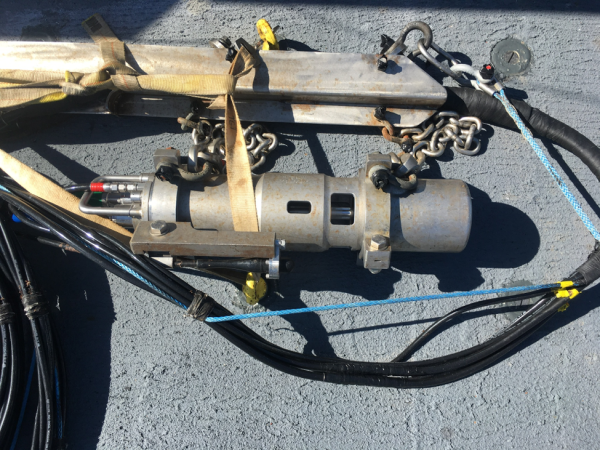
Image of an air-gun that acted as the sound source. (Photo courtesy of Ruby Schaufler.)
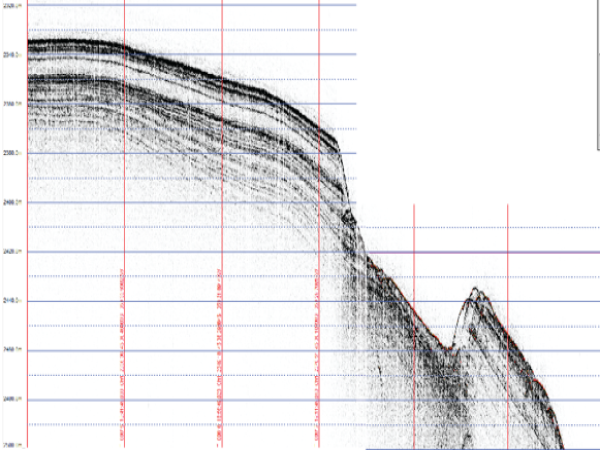
Higher-resolution images of the upper few tens of meters of the seabed were obtained using a chirp subbottom profiler, which relies upon higher frequency sound pulses than those made by the air-guns. Layers are clearly shown by black lines on this subbottom profile image, which represents a cross section of the seabed. (Photo courtesy of Niall Slowey.)
To investigate the Southern Argentine Margin and its sedimentary records of past ocean circulation, scientists aboard the expedition used integrated research techniques, including: acoustic imaging (multichannel seismic surveying, subbottom profiling, and multibeam-mapping), seafloor sediment sampling using gravity cores, piston cores and multi-corers, and seawater property measurements.
To obtain high-resolution images of seabed features that may be hundreds of meters thick, a pair of air-guns and 900-meter-long hydrophone streamer were towed in the seawater behind the ship. The guns released air bubbles to generate pulses of sound that traveled down to the seafloor and then penetrated the sediments that make up the seabed. Sound that reflected off sediment layers was measured by the hydrophones in the streamer, and then used to generate images of the seabed features.
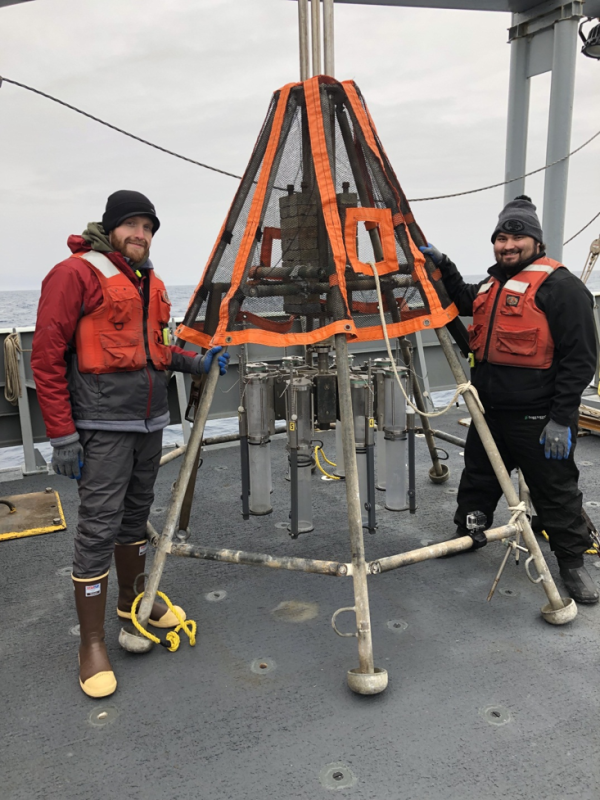
Texas A&M graduate student Richard Rosas (right) and Tim Shamus from Rutgers University (left), standing next to the multi-corer, which has clear plastic tubes attached to it. (Photo courtesy of James Wright.)
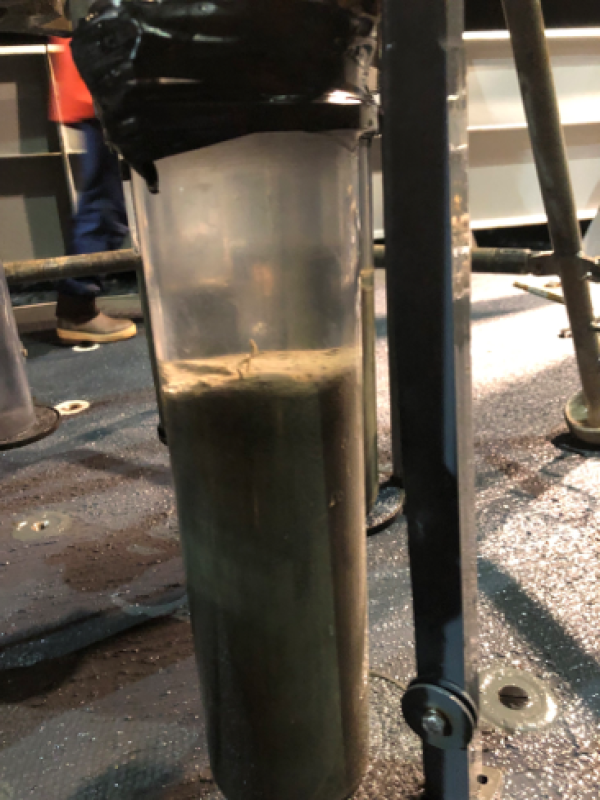
The tubes collect seawater and sediment samples when the multi-corer is lowered to the seafloor. (Photo courtesy of James Wright.)
Three current Texas A&M Oceanography graduate students advised by Slowey were also part of the cruise: José Córdova, Richard Rosas and Ruby Schaufler. Additionally, Texas A&M student researcher, Tanner Eischen, and former graduate student Dr. Theodore Them, now an assistant professor at College of Charleston, were also aboard.
While at sea, the students participated in hands-on research, collecting sediment cores and oceanographic data. Their major responsibility was to log various sediment cores, using a multi-sensor core logger (MSCL) to obtain the physical properties of the core, such as core length, thickness, bulk density etc. In addition, seawater samples were collected at each core site.
Overall, the expedition surveyed more than 9000 km and collected over 370 meters of sediment samples, Slowey said.
“Once the crew brought the sediment cores on to the deck, we, as a team, had to cut, clean, and label all the cores which took several hours to accomplish the task. After much experience and organizing ourselves as a pit team, we learned to manage the tasks,” Córdova said. “We got to know each other and the coring operation became the fun moment of the day rather becoming a routine job during the cruise. To us, the cruise was not only a scientific experience but also a life and leadership experience.”
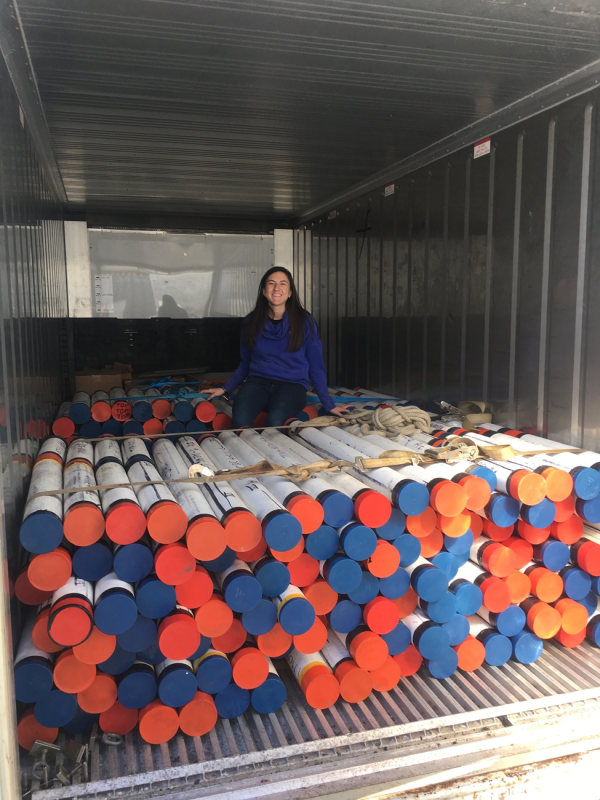
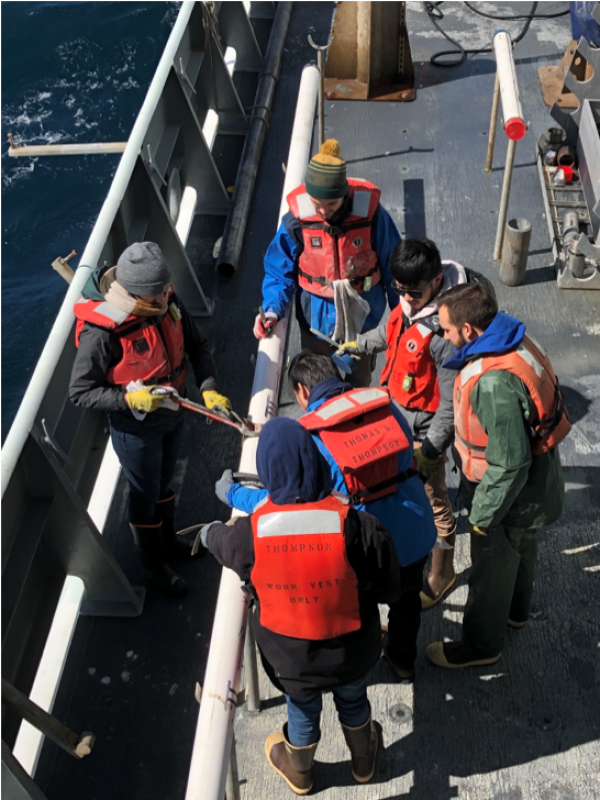
“Not only was the Argentine expedition essential for our NSF project, it is very important for our next step,” Slowey said.
Slowey and Wright are leading an effort to plan an International Ocean Discovery Program (IODP) scientific drilling expedition to re-visit the Argentine margin and collect much longer records of sediment cores using the IODP drilling ship JOIDES Resolution. The proposed plan is now being considered by the IODP Science Evaluation Panel.
“Despite its importance as sedimentary record, scientific ocean drilling has yet to be conducted along the Argentine margin,” Slowey said. “The seismic data and other results from this study will be used to refine drilling targets and identify specific sites for the proposed drilling leg, which would enable better understanding of the evolution of the Southern Ocean’s water mass structure over the Cenozoic (the past 65 million years).”
By Bumsoo Kim